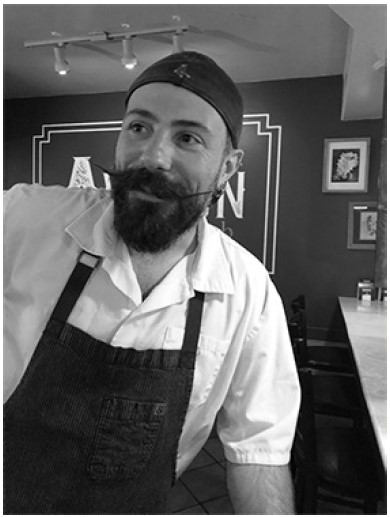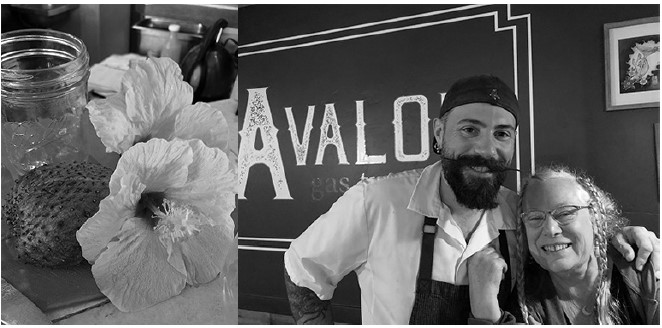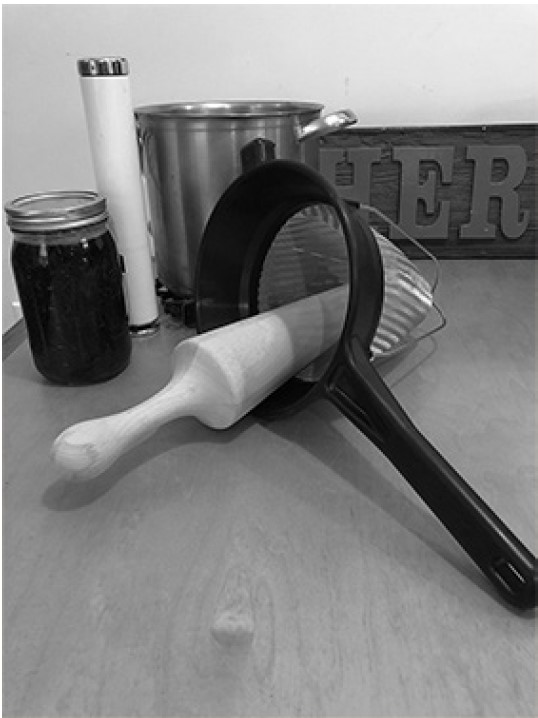
My son Gabe and wife Ali own Avalon Gastro Pub in Kauai. Gabe taught me about Sous Vide Tincturing when I was teaching him how to make bitters. I said, “Now put the jars in a dark room, shake and pray daily for two weeks putting all those cocktails into your intentions.” He smiled and said, “Nope, done tomorrow.” And, he pulled out his Sous Vide.
Gabe shared that ‘finger tightening’ is important. That means you slightly loosen the brand-new lid, sort of twist to open a bit and twist to close but not all the way. If you don’t do this the alcohol, which is, key words, volatile spirits, creates pressure and may burst the jar. A waste of good brandy and herbs!
Jason Logsdon from his Amazing Food Made Easy site shared words in italics. Thanks Jason!
The general process of making a sous vide infusion is very easy. The water bath is first preheated to the temperature you want to make the infusion at. This is usually around 131°F to 160°F (55°C to 71.1°C) for vinegar, water or alcohol and 149°F to 176°F (65°C to 80°C) for oils. The temperature used affects the flavor profile of the infusion as different flavors are extracted more quickly from the flavoring agents at different temperatures.
Remember that bitter principals in traditional tincturing become strong on the fifth day. That is why cordials and cocktail bitters are made in less than five days. Imagine Damiana Cordial, a blend of Roses and maybe some Prickly Ash or Ashwaganda, compare a five-day to a two-week traditional tincture to the sensual swirl of the four hours in a Sous Vide, Oolala.
You can make bottle of special plants and mix preparations as you desire. Color that is amazing on day 6 may be gone on day 10, so have fun! Try Blue Pea Flower or Violets. Color also heals. Jason talks about sous viding the spices separately. Having flavor notes prepared and mixing the components. The floral notes and delicate flavors, like Rose or Calendula, Borage or Damiana, Jasmine or Chamomile can be infused in a few hours or days separately without the sous vide. Nice old-fashioned tincturing. I remember Rocio Alarcon telling me that when she lived in the Basque region of France, they never infused Chamomile longer than five minutes! The calming nervine aspects shifted to bitter principles in an unpleasant way. Experiment with seeds rich in volatile oils, peels and petals, barks and roots, hips and fruits. What is it you want to achieve? Aphrodisiacs? Tonics? Bitters? Simples? There is no limit to what can be created. Always research, three books minimum, written by a practicing herbalist before diving in.
Next, place all of the flavoring agents into the liquid you are infusing and seal them in a Mason jar, or heat-proof glass bottle. Finger tighten.
Place the infusion in the water bath and let it cook until the flavor profile you are seeking is achieved. This is usually 1 to 4 hours for vinegar or alcohol and 3 to 12 hours for oil, depending on the temperature used and the flavor profile desired.
Once the infusion has been completed it should be chilled in an ice bath so the volatile aromatics will return to the liquid. Once chilled, strain the liquid and then it is ready to be used.”
So, do make sure to slowly add the cold water so your jar does not crack. A number of us have lost valuable herbal preparations due to cracked jars. They will crack if the lid is too tight, or maybe if the jar is too old?
When it comes time to strain Gabe also introduced me to a Chinois Sieve. Extra fine Stainless-Steel mesh is best. Yes, back to France and no cheesecloth. If you don’t have this tool try painter’s straining cloths from the hardware store. They have handy elastic tops which fit around jars nicely. Maybe use two at a time. These I rinse, and place in the laundry or hand wash with dish detergent. Oils must be soaked in detergent first.

Pour your mix into the sieve and use the wooden pestle to rub around until every delicious bit has been squished through. Remember to compost herbs back to the Earth. The circle of medicine making and respect for the plants begins when they become terrain again.
Pour the menstruum into a sterile bottle. Label with ingredients and the date.
Ponder the purpose of your tincture, the blend of tastes and colors. Do read Jason’s writings to master the art of creating delectable complex flavors. Thanks again to my talented son, Gabe.
Tools you will need

- A menstruum: Alcohol, Vinegar, Vegetable GlycerinHerbal friends
- A sharp knife for fruits and other edibles
- A cutting board
- Mason jars and brand-new lids, no dents or rust!
- Sous Vide
- Tall stainless pot
- Trivet to place the pot on
- Chinois or straining bags
- Pestle which fits nicely into the Chinois
- Mason jars
- Storage jars for completed tincture, presentation jars
- Labels and permanent markers and pretty stickers
The sooner you wash your tools the easier it is! Don’t walk away.
Your imagination is unlimited.
Have fun!